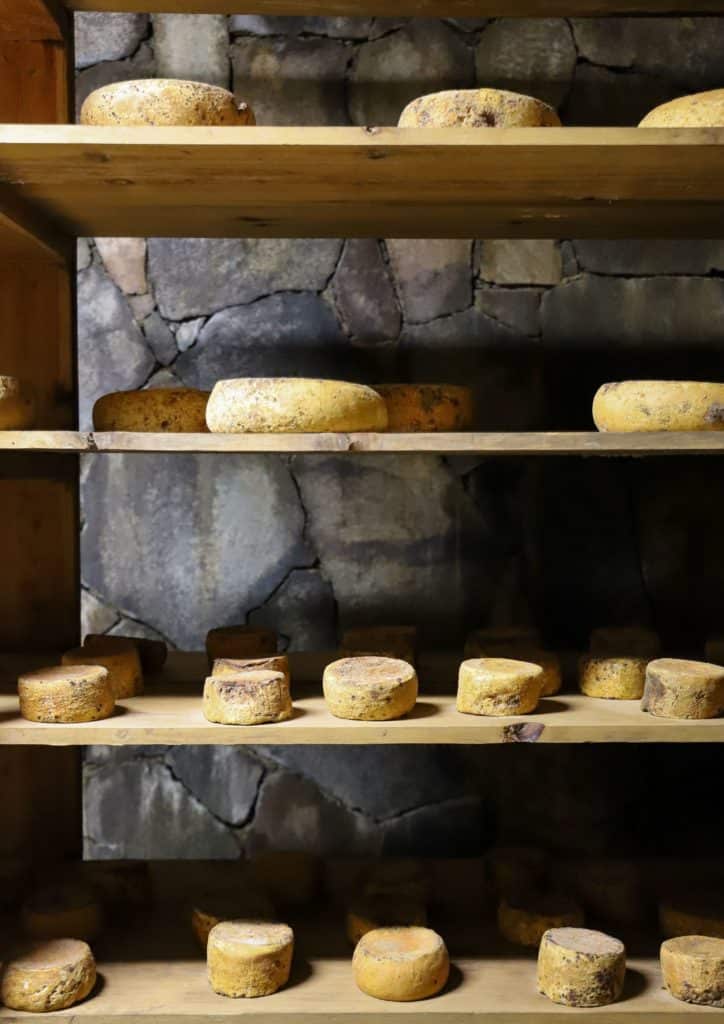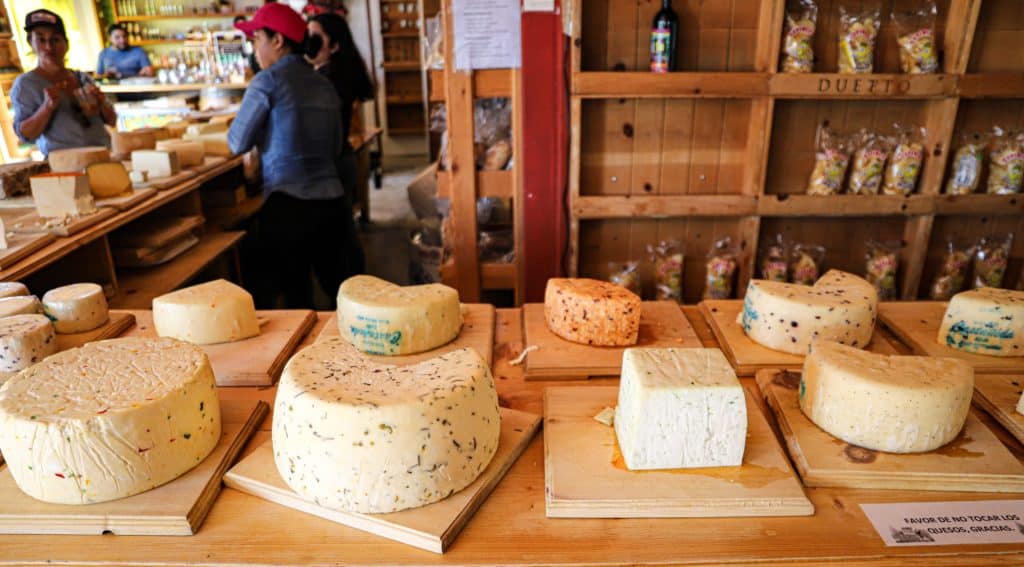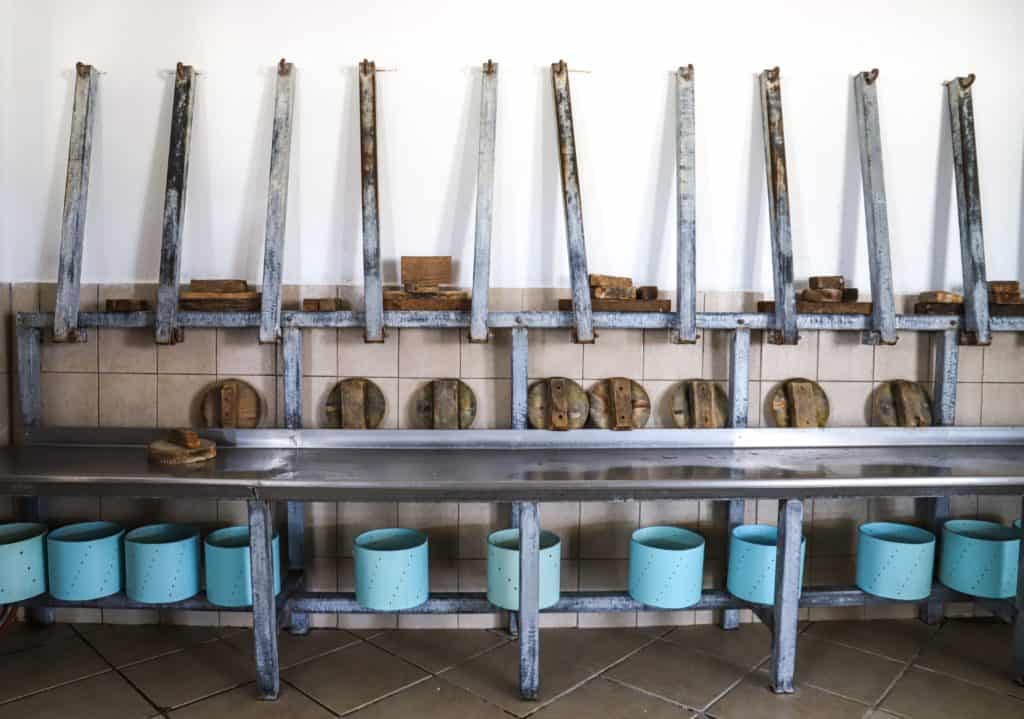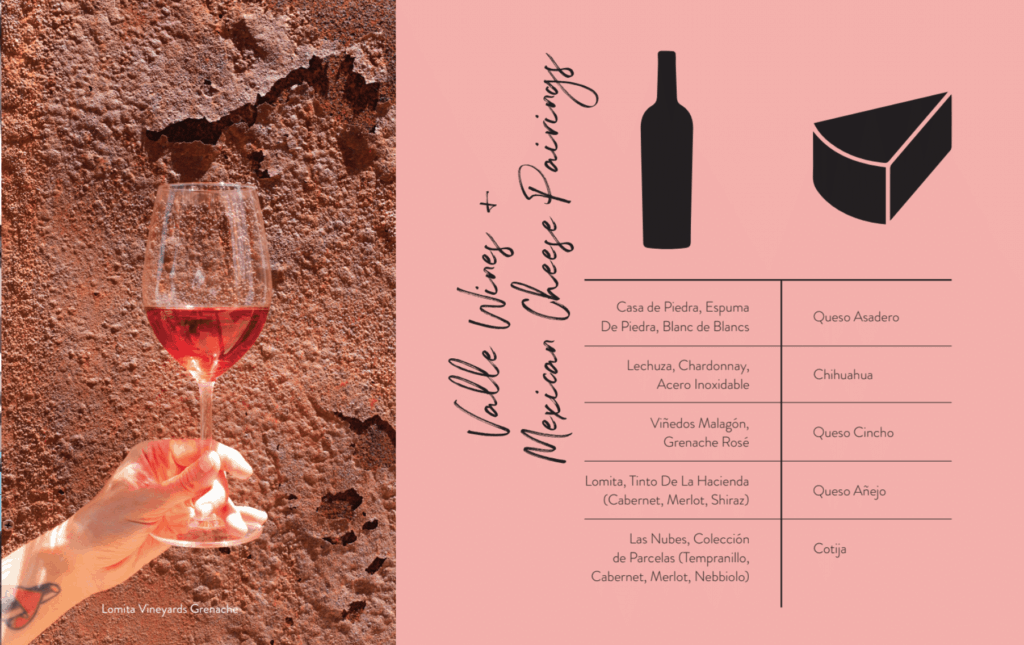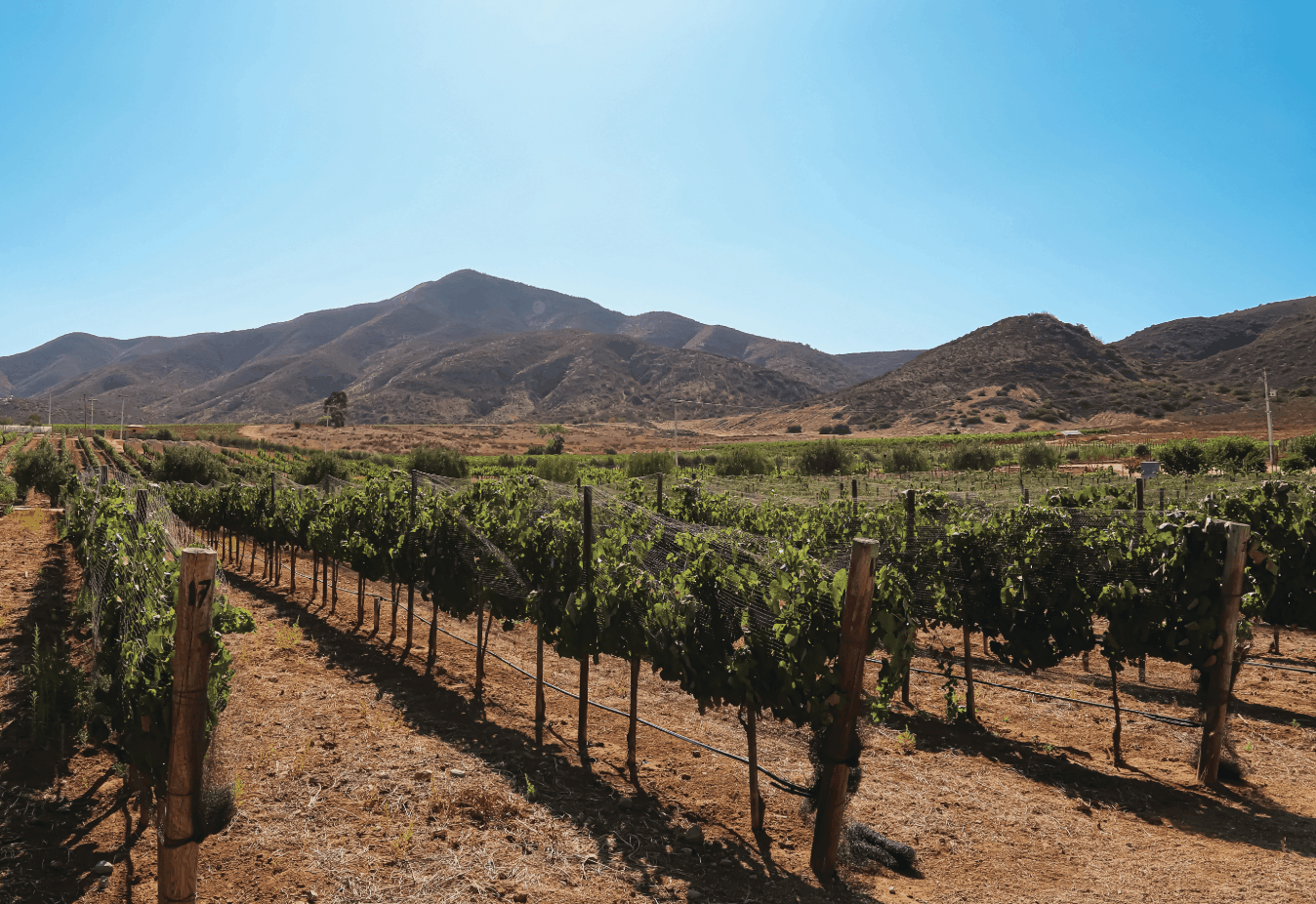
Photos by Benjamin Wheatley
My sister looked skeptical.“I don’t think this is the way,” she said.
I looked down at Google Maps. The twisting network of roads meandered aimlessly with no real point of orientation. Looking up at the steep, dirt hill ahead and the cloud of dust that had gathered, I agreed with her and carefully backed the car down to the safety and reassurance of one of only three paved roads in the Valle de Guadalupe. Ditching the navigation app, we turned to the most reliable source of directions in the Valle: the bright blue roadside signs that mark the wineries and restaurants otherwise hidden in the maze of trails and rolling grapevine-covered hills.
With headlines like “The Hottest Up and Coming Wine Region” and “The New Napa,” the Valle de Guadalupe in Baja California Norte, Mexico has built up a steady pilgrimage of travelers for the past decade. These flashy headlines do not do justice to the magnitude of what this region has evolved into; Mexico’s wine country fosters an unadulterated food community that is showcasing what the dining scene of an agricultural community should be. With rustic authenticity, the Valle de Guadalupe is redefining the identity of Mexican cuisine. The rumor of cheesemakers drew me in, but I quickly found that organic growers and local fishermen were just as alluring in the story of Baja. The Valle is everything Napa is not, in the very best way.
Sitting just 90 miles south of San Diego, California, the Valle is worthy of a road trip. The border crossing into Mexico is an easy, unfussy affair—no passports checked and no cars stopped (if you’re lucky), it’s just you and the instant sensory overload experienced when crossing the border into Tijuana. Navigating through the city traffic, then following the signs to Ensenada, you are greeted first by the looming, rusted border wall that mournfully reminds us of the conflicted relationship between our countries. Your attention is quickly diverted as the border wall gives way to the coast and dissipates into sea foam. The stunning beauty of the Pacific Ocean and rugged cliffs of the Baja coast are your new travel companions on the drive to the heart of this rural, agricultural region.
A Taste of Baja
My sister and I focused on the road signs along the main highway, looking for our first stop after the drive from the border. “Conchas de Piedra,” the sign announced, with an arrow pointed right.
There is no better way to welcome oneself to the Valle than with fresh harvested Pacific oysters and sparkling wine. We cautiously navigated the dusty path up another, less threatening hill to a small dirt parking lot. With the car parked and a palpable sense of relief, we walked towards a grouping of corrugated, yet stylish buildings. A stone-lined path skirted around the buildings, where we found a picturesque open-air patio and kitchen.
The best kitchens in the Valle de Guadalupe have become as much apart of the scenery here as the rolling hills of grapevines. Conchas de Piedra offered long wooden communal tables and a simple menu of the Pacific’s bounty. We ordered a platter of raw oysters: Baja Kumamotos, Kumiai, and Pai Pai accompanied by a trio of mignonettes that included habanero and grasshopper. Chocolate clam ceviche was served in its freshly shucked shell, tossed with tomato, onion, and lime juice. Roasted Pacific oysters were briny and luscious in epazote butter. The restaurant is on the vineyard Casa de Piedra, led by celebrated wine maker Hugo d’Acosta, whose Espuma de Piedra Blanc de Blanc could stand up to any champagne in a blind tasting.
After leaving the dreamy restaurant setting, we stopped at the local cheese shop, Tienda de Quesos y Vinos los Globos, for our first sampling of Mexican cheese. As you enter the Valle on the main road, this nondescript building is easy to miss. Inside the shop the wooden counters display wheel after wheel of flavored queso fresco, smoked Manchego, and mushroom-rubbed añejo (a firm, aged Mexican cheese). Local olive oils, honey, guava fruit jams, and olive-oil-fried potato chips pack the shelves of this mecca for local products. While a handful of the cheeses were imports, the majority highlighted local cheesemakers from the neighboring Valle de Ojos Negros (literally, “Valley of the Black Eyes”). Home to more than twenty cheesemaking families, the Valle de Ojos Negros is to cheese as the Valle de Guadalupe is to wine. Local producer Quesos Castañeda makes queso frescos flavored with everything imaginable: rosemary and olive, jalapeño, garlic, tomato, and even almond. Cincho, a cheese in the style of cotija, boasts a beautiful, bright orange-red rind starkly contrasted by its chalk white, salty, crumbly interior. The exterior is rubbed with adobo to achieve a vibrant color.

El Buen Sazon tacos: Pescado (fish), bottom left; Birria (stewed beef), top center; and Camarones (shrimp), bottom right
The Valle de Guadalupe is a food lover’s paradise. Where there is a wine growing climate, you will find the terroir that produces a bounty of impeccable delights. Hugged by the Pacific Ocean to its west and the Sea of Cortez to its east, the seafood is unparalleled. Oysters, sea snails, clams, uni, snapper, crabs, lobster, and tuna are just a few of the diverse offerings fished daily. The microclimate for the region is the inspiration for its namesake cuisine, Baja Mediterranean. Hot, dry summers where the sea breezes sweep in to temper the evenings give way to cool, damp winters, ideal for the growth of olives, grapes, and almost every other type of produce imaginable. What has taken shape is a style of cooking that is rooted in the historical recipes and traditions of Mexican flavors, yet reflective of the unique characteristics of Baja. Complex sauces and deeply charred, smoky flavors balance fresh produce and ingredients distinct to the region.
Chef Javier Plascencia has been a key force in defining the Baja taste. Animalón, a recent addition to his roster of restaurants, focuses exclusively on Baja-grown ingredients. When we arrived that evening the sun was beginning to set, casting a violet hue onto the vines lining the path to the restaurant. Mesquite wood perfumed the cool night air. The view was dominated by the outstretched branches of a 200-year-old oak tree woven with small lights mimicking the starry night sky. This is the dining room at Animalón. Tables are tucked under the immense canopy of the tree, setting the scene for that rare culinary gem: a restaurant that combines a comfortable and casual energy while serving you a meticulously crafted tasting menu.Smoked chicken breast was sauced with a complex olive chimole paired with baby turnips and apple tempeche. Lobster Tallarines took the form of a stuffed pasta served with lobster mole, tomato jam, and crema Mexicana. I would willingly drive the most perilous roads of the Valle for a meal of this magnitude.
Valley of The Black Eyes
Day two opened with the bright, saturated sunlight that permeates this arid region. Where there are no grapevines, the land is hard packed and seems to reflect the burnt orange glow of the sun. It was time to find the cheese cave of Casa Ramonetti, home of the legendary fourth-generation cheesemaker Marcelo Castro in the Valle de Ojos Negros. Getting there takes you through Ensenada, a small coastal city with the finest seafood tostados ever made. For a quick lunch, we stopped at the small street corner stall, La Guerrerense. Run by Chef Sabina Bandera, this stall is standing-room only. I ordered my favorite: pisco clam and sea urchin, while my sister opted for octopus and red snapper ceviche. We ate them so ravenously we immediately got back in line and ordered two more tostados each. On the road to cheese, one must always eat tostados, right?
Back in the car, we drove the twisting highway through the boulder-strewn foothills of the Sierra de Juárez. GPS goes out fast but highway signs that read “Bienvenidos a la Ruta del Queso y el Vino” offer us peace of mind that we are headed in the right direction. Ranchola Campana is arguably the most well-known creamery of the Valle de Ojos Negros. They’ve produced cheeses like their aged cow’s milk Ramonetti since1911. It was Marcelo Castro’s great-great-grandfather Pedro Ramonetti Bonetti, a Swiss-Italian immigrant, who began the family cheesemaking legacy here, which now includes cheese, butter, and ice cream. Their cheese cave, La Cavade Marcelo—the first in Latin America and the only one open to the public—was Castro’s dream.
My sister and I took the full tour of the property with our guide, Diego, who showed us the milking facility and the cheese pressing room. The cows, who were clearly done with the day’s work, dozed languidly in the pastures around us, wisely avoiding the heat of the day. I eagerly anticipated our entry into the cheese cave, partially for its 45°F temperature and fully for the opportunity to eat all of the dairy products awaiting me therein. Inside the cheese cave, we were first presented with eight cheese samples and the butter made on the property. Ricotta, four types of queso fresco, and three ages of añejo: 5 months, 1 year, and 2 years. The tasting room was flanked on three sides by the aging rooms and through the glass doors I admired the granite walls casting their shadow over the aging yellow wheels. Upon entering the room, we were greeted by wheels of all shapes and sizes, some washed in ale from a brewery in nearby Ensenada, while another is coated in hay. Here, deep underground, in the heart of Baja California, Mexican cheese takes on a bold new personality.
The Land of Grapes
Our last day in the Valle opened with breakfast, and the one-hour wait that is accompanied by trying to get a table at La Cocinade Doña Esthela, once named the best breakfast in the world. Blanca Esthela Martinez Bueno first opened her doors to feed the workers from the neighboring vineyards and is now feeding hungry travelers who make their way to the Valle de Guadalupe. Every table is welcomed with tortilla chips, salsa, and house-made queso fresco made from the milk of the cows on the property. The menu includes her legendary fresh corn pancakes and lamb slow-roasted in a clay oven and served in consommé.
The lure, the growing crowds, and the celebration of the Valle de Guadalupe over the past decade would be impossible without the region’s high-quality wine production. In the early 1900s, a sect of Christian immigrants from Russia moved into the Valle de Guadalupe and began to make a living doing what they knew how to do: grow grapes. They didn’t make these grapes into wine, but instead sold to others who did. The vines took hold of the land and continued to grow. Now the Valle boasts over 200 vineyards, including the biodynamic practices found at sister properties Finca La Carrodilla and La Lomita.
We tasted organic wines made using sustainable practices at the sweeping property of Finca La Carrodilla. Tucked up against the boulder-strewn hills that frame the valley, this vineyard boasts a vegetable garden, cows, sheep, chickens, and bees. They make their own queso fresco and butter, which are served exclusively on-site in their tasting room. Working with a biodynamic calendar, their Canto de Luna wine is a robust blend of Cabernet Sauvignon, Tempranillo, and Syrah, all harvested by moonlight. Árbol is an organic Syrah made using the natural yeast of the grapes. La Lomita Winery is located on a more compact parcel of land, but boasts Tras Lomita, one of the best restaurants run by Chef Sheyla Alvarado—our final destination.
Our rustic wooden table at Tras Lomita was perched on a patio framed by rambling vines and jewel-toned bougainvillea. Sitting at this table in the fading light of the day with a bounty of tamales wrapped in grape leaves, olive wood grilled chicken, and glasses of organic Grenache in front of me, I was filled with gratitude and inspiration. It’s hidden among the grape vines where Baja Mediterranean cuisine shines. And it’s the country’s winding roads—lined with breathtaking views, supple Pacific oysters, and sea urchin tostados—which lead to cheese in Mexico.



